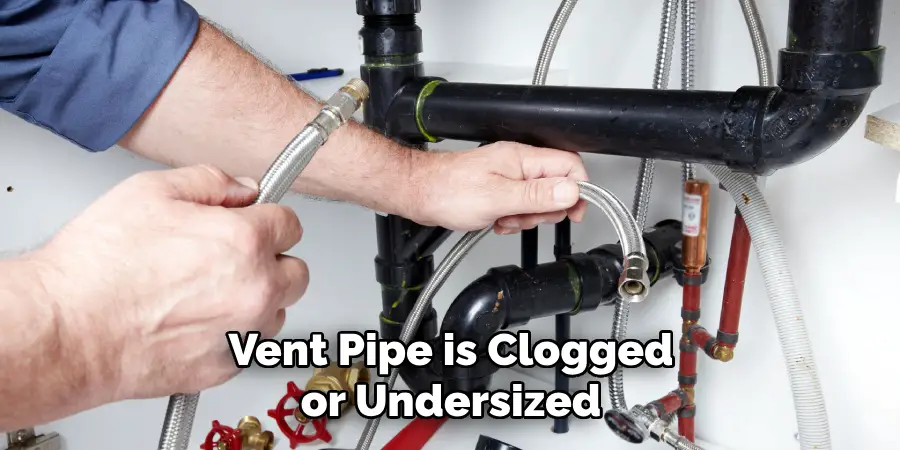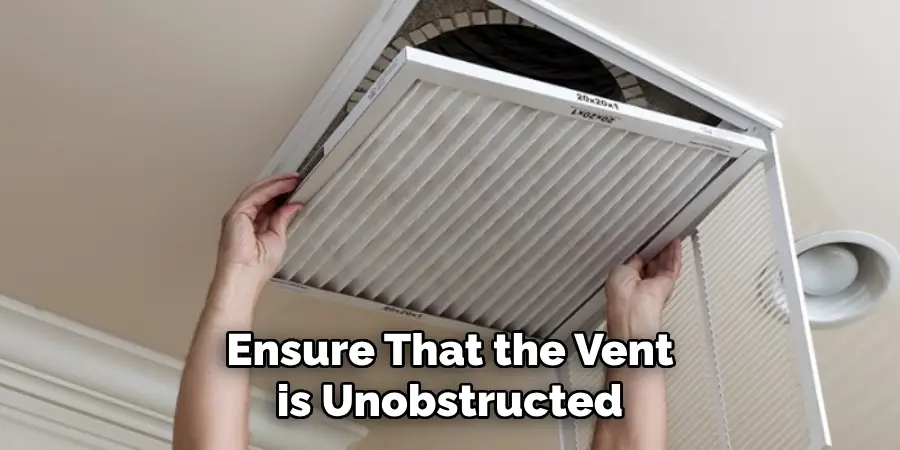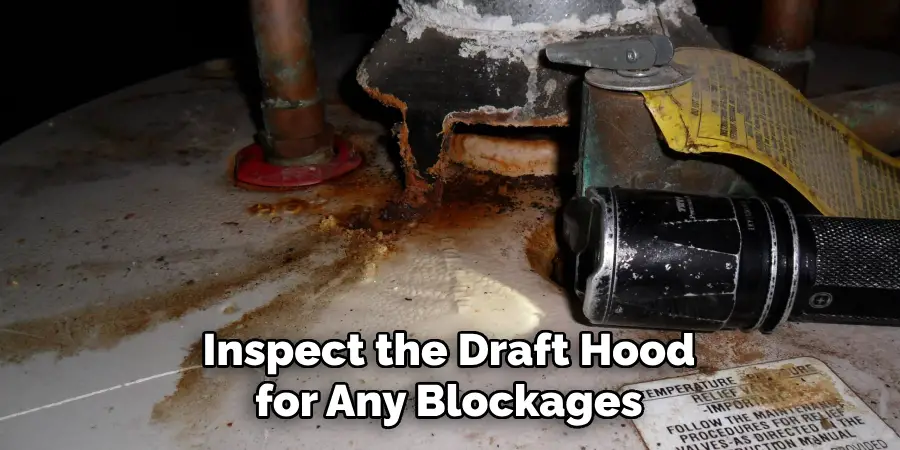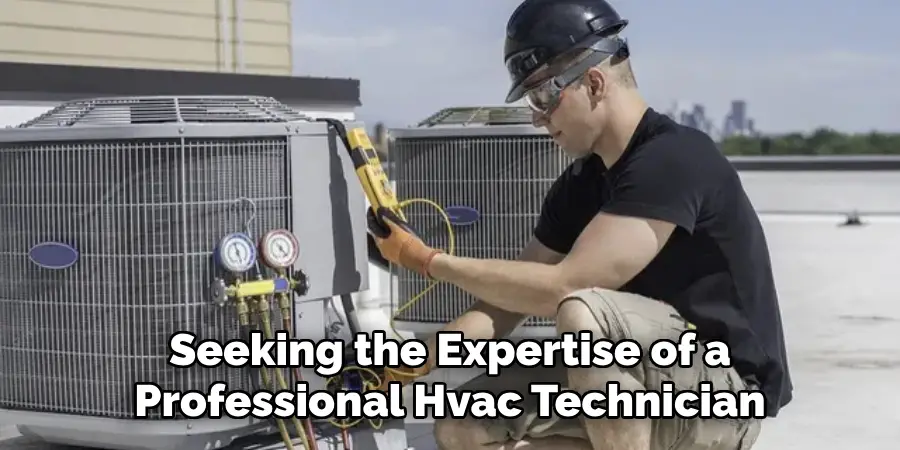Experiencing backdrafting in a water heater can be both perplexing and concerning. Backdrafting occurs when combustion gases, instead of being expelled properly through the flue, are forced back into the living space.

This not only compromises the efficiency of the water heater but also poses serious health risks due to the potential release of harmful gases like carbon monoxide. Understanding how to effectively address and fix backdrafting in a water heater is essential for ensuring the safety of your home and maintaining the proper functioning of the appliance.
In this guide, we will delve into how to fix backdrafting water heater. From identifying the root causes to implementing practical solutions, we will equip you with the knowledge and steps needed to restore your water heater to safe and efficient operation.
The Concept of Backdrafting in Water Heaters
Backdrafting occurs when the hot exhaust gases are drawn back into the water heater, instead of being vented out through the flue. This can cause a number of problems, such as producing soot and other debris in the house, excessive heat near combustible materials in the home, and releasing hazardous carbon monoxide gas into living areas.
Fortunately, there are ways to prevent and fix backdrafting in water heaters. The first step is to identify the cause of the problem. Possible causes can include: a clogged or undersized vent pipe, a negatively-pressured area near the heater, and too much air being drawn from other combustion appliance vents.
Once you’ve identified the cause of the backdrafting, you’ll need to take corrective action. If the vent pipe is clogged or undersized, it should be cleaned or replaced with one that meets local code requirements. If there is a negatively-pressured area near the water heater, it can be addressed by increasing air intake in other areas of the house and/or installing an additional vent pipe.

If there is too much air being drawn from other combustion appliance vents, you may need to adjust the settings on those appliances or install additional vents.
In addition to these corrective measures, you can also help prevent backdrafting by installing a powered direct-vent water heater. These models draw in fresh air and exhaust gas directly through separate pipes, eliminating the potential for backdrafting.
The Potential Dangers of Backdrafting and Its Impact on Safety
Backdrafting can cause a buildup of flammable gases, such as carbon monoxide, in your home. This can lead to an increased risk of a fire starting and potentially serious health problems for those living in the house. It’s important to take steps to prevent this gas from entering your home in order to keep you and your family safe.
In order to address backdrafting issues in your water heater, be sure to have a certified HVAC technician inspect and repair the unit. The technician will look for any possible blockages or malfunctions that could be causing the problem.
If it is determined that a blockage is indeed causing the issue, they can then clear out the obstruction and restore proper ventilation. In some cases, the technician may need to install a vent that is specifically designed to reduce backdrafting in order to ensure proper safety.
It’s also important to regularly inspect and clean all of your air vents, filters, and other ventilation components. A clogged filter or blocked vent can prevent fresh air from getting into your home, leading to backdrafting.
It’s important to keep these components clean and free of debris so that fresh air can flow into your home. Additionally, you should check the seals around windows and doors to ensure they are in good condition and not allowing exhaust gases from escaping into your living space.
10 Methods How to Fix Backdrafting Water Heater
Method 1: Check Ventilation
The foundation of addressing backdrafting in a water heater lies in understanding the dynamics of ventilation. Proper ventilation ensures the efficient flow of combustion gases out of the flue and prevents their backflow into the living space. Begin by examining the vent system for any blockages, obstructions, or damage.
Clear away debris and ensure that the vent is unobstructed and securely connected to the water heater. Additionally, verify that the vent cap is in good condition and functioning as intended. Adequate ventilation is the cornerstone of preventing backdrafting and maintaining safe operation.

Method 2: Evaluate Vent Size and Length
The dimensions of the vent system, including its size and length, play a crucial role in preventing backdrafting. Undersized or excessively long vents can hinder the proper expulsion of combustion gases. Consult the manufacturer’s guidelines to ensure that the vent is appropriately sized for your water heater model.
If the vent length exceeds recommended limits, consider shortening it or using a larger diameter vent pipe. Proper vent sizing and length contribute to smooth gas flow and reduce the likelihood of backdrafting.
Method 3: Inspect Flue Connection
A secure and well-sealed flue connection is vital in preventing backdrafting. Inspect the connection between the flue pipe and the water heater for any gaps, cracks, or signs of deterioration. Seal any gaps using high-temperature silicone or approved sealants. A snug and airtight flue connection ensures that combustion gases are directed out of the flue rather than seeping back into the living space.
Method 4: Assess Negative Pressure
Negative pressure within the living space can create conditions conducive to backdrafting. Household appliances like exhaust fans, range hoods, and dryers can create a vacuum effect that draws combustion gases back into the home. To mitigate this, ensure proper ventilation in the living area and minimize the simultaneous operation of appliances that could contribute to negative pressure. Consider installing makeup air systems to balance air pressure and reduce the risk of backdrafting.
Method 5: Check Water Heater Location
The placement of the water heater within your home can influence its susceptibility to backdrafting. Avoid installing the water heater in areas with poor ventilation or confined spaces. Adequate airflow is essential to maintaining proper combustion and venting. If the water heater is located in a small or enclosed area, consider installing additional vents or louvers to facilitate airflow and prevent backdrafting.
Method 6: Verify Draft Hood Function
The draft hood, a component located above the water heater’s burner, aids in regulating airflow and preventing backdrafting. Inspect the draft hood for any blockages, debris, or signs of damage. Clean the hood and its components regularly to ensure unrestricted gas flow. If the draft hood is compromised, it can impede proper combustion and contribute to backdrafting. Replace the draft hood if necessary, using manufacturer-approved parts.

Method 7: Check for Obstructions
Obstructions within the venting system can disrupt the flow of combustion gases and lead to backdrafting. Thoroughly inspect the entire vent system for any foreign objects, debris, or animal nests that may be obstructing the path. Clear any obstructions to ensure a smooth and unimpeded flow of gases. Regular maintenance and inspections of the vent system are crucial in preventing the accumulation of debris that can trigger backdrafting.
Method 8: Consider Wind Effects
External factors, such as wind patterns and gusts, can influence the occurrence of backdrafting. If your water heater’s flue termination is susceptible to wind effects, consider installing a wind deflector or a cap designed to mitigate the impact of gusts. These devices redirect wind currents away from the flue opening, minimizing the likelihood of combustion gases being forced back into the living space.
Method 9: Perform Combustion Analysis
A comprehensive approach to addressing backdrafting involves conducting a combustion analysis. This involves measuring gas composition, temperature differentials, and airflow to ensure optimal combustion efficiency.
A combustion analysis can identify issues that may contribute to backdrafting, such as improper air-to-fuel ratios or incomplete combustion. Professional technicians equipped with specialized tools can perform this analysis and make adjustments to the water heater’s settings to mitigate backdrafting risks.
Method 10: Seek Professional Help
In cases where backdrafting persists despite your efforts, seeking the expertise of a professional HVAC technician or plumber is advisable. These professionals possess the knowledge, experience, and diagnostic tools to identify complex issues and implement effective solutions.

A skilled technician can perform a thorough assessment of your water heater, ventilation system, and overall home environment to pinpoint the underlying causes of backdrafting and recommend appropriate measures for correction.
Conclusion
Although a backdrafting water heater is not typically the most severe issue, it should still be addressed promptly to make certain that your water heater works properly and efficiently. With this blog post, you are now hopefully better informed about backdrafting and how to fix it. The different solutions proposed provide for various levels of difficulty when trying to repair your water heater.
We hope that with this information, you’ll never be too overwhelmed about fixing a backdrafting water heater again. If all else fails, don’t forget to contact a professional to guarantee the safety and effectiveness of the solution. With the tips shared in this post, we hope you’ve learned how to fix backdrafting water heaters quickly and easily so that you can be confident that your house is provided with hot water each day!
Rick is a handyman who grew up helping his dad with his business. He learned a lot from him about how to fix things, and also about how to work hard and take care of business. These days, Rick is still into fixing things- only now, he’s doing it for a living.
Rick is always looking for new ways to help people grow and develop. That’s why he started contributing to this blog: to share all his experience and knowledge so that he can help people who are interested in DIY repair.

